- mayoclinic.org - a short article on why we should exercise the center of the body
- journals.lww.com - core training: evidence leading to better performance and injury prevention
- solen.sk - article on the importance of deep stabilization system activation in conservative treatment
Center of the body/CORE and its muscles. How and why to strengthen it? + Exercises
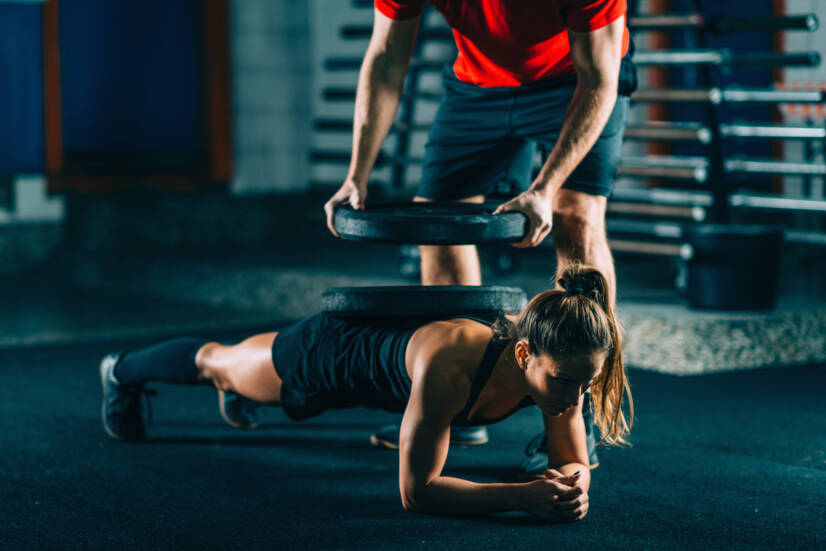
How does the centre of our body actually work? What does it mean for us and is its exercise so important? Find out more in this article.
Article content
- What is the center of the body?
- Muscles of the middle of the body
- Consequences of a poorly functioning mid-body
- What can we do to keep our core functioning properly?
- Mid-body training and exercises to strengthen the mid-body
- Plank
- Side plank
- Side plank with lower leg raise
- Superman
- Bridge
- Knee to elbow
- Lateral leg raises
- Alternating upper and lower limb lifts
Middle of the body.
You're wondering what's so interesting about it?
The truth is, it's not complicated. But it's not interesting or important.
Deep stabilization system, midbody, core. We're still talking about the same thing.
We may not even realize how important a role it plays in our daily lives.
Of course, also in sports.
What is the center of the body?
The muscles of the lower back, buttocks, abdomen and pelvis.
But when we think about the deep stabilization system, it gets more interesting.
Stabilizing the middle of the body is what our core does. It makes it what it is.
But what is the point of having a stable and strong core?
Simply so that we can lift weights, exercise, run, dance or just walk.
If we were to slip on the ice, for example, our deep stabilization system is what can keep us from falling to the ground.
That means it helps us keep our balance and react quickly.
A solid centre of the body reduces the possibility of injury.
Its functions are manifold:
- it helps maintain the body's balance, making it easier to overcome obstacles or correct unexpected changes.
- it makes us more mentally fit and confident
- protects the lumbar spine and reduces pressure on the discs
- gradually activates other muscles to move, allowing us to exercise more efficiently and with better focus on a specific muscle group
- maintains an upright and straight posture
- evenly distributes the load on our joints and prevents excessive wear and tear
- a firm centre of the body helps against back pain
- helps us to breathe properly
Muscles of the middle of the body
The muscles of the middle of the body, i.e. the deep stabilising system, are located, deeper in our body.
They create protection for the abdominal cavity, as if lining it from the inside.
De facto, they are not visible and a few classic abdominal crunches are not enough to exercise them.
Of course, if we want a nice stomach, it's good to do core exercises. It activates other muscles.
Not excluding the rectus abdominis.
Read the article about weight loss and fat loss.
The muscles that make up the center of the body:
- The diaphragm (musculus diaphragma)
- the transversus abdominis muscle (musculus transversus abdominis)
- pelvic floor muscles (musculus diaphragma pelvis)
- deep muscles of the spine (musculi multifidi)
- large gluteal muscle (musculus gluteus maximus)
There are actually more, but knowledge of these muscles is quite sufficient.
Most of the time, these are the so-called postural muscles that allow us to maintain our posture.
The next group are the locomotor muscles, which allow us to move.
The diaphragm is the main respiratory muscle.
The pelvic floor muscles provide support to the organs. They help with correct posture and walking.
The transverse abdominis muscle encircles the abdominal cavity and attaches anteriorly to the linea alba. It is a ligament that fills the space between the so-called bricks of the rectus abdominis muscle.
The deep muscles of the spine are the muscles close to the spine. They form its primary protection. They relieve its load and help us stand upright.
All the muscles of the middle of the body also protect the organs of the abdominal cavity. They attach to the spine and have a direct effect on its strength and movement.
Their functionality is related to breathing and posture. That is, the correct position of the chest in relation to the pelvis.
If there is a deviation, there is a decrease in their functionality.
This results in various pains, for example, in the lumbar or sacral spine.
Article on cardio training.
Consequences of a poorly functioning mid-body
If our mid-body is not sufficiently stimulated, it is weakened.
As a result, it may not function as it should.
This brings with it various physical disorders and reduced functionality of certain systems of our body.
Last but not least, it is caused by sedentary employment.
Specifically, incorrect posture when sitting.
All this can happen if our body center is not functioning properly:
- the deep abdominal muscles begin to weaken and lose strength, and that's where it all starts.
- if we do some physical training, it can start to lose its effectiveness and we have to put in more effort
- basal metabolic rate decreases and physical fatigue increases even with less exertion
- the pelvic floor muscles weaken and over time incontinence can set in
- back pain occurs as postural muscles are replaced by musculoskeletal muscles and are overloaded
- spinal protection is reduced and disc problems can occur
- abdominal function is reduced and problems with digestion or elimination occur
- reduced ability to breathe properly can make it harder to resist stress
What can we do to keep our core functioning properly?
It is important to understand how a strong core can help us.
Certainly in everyday activities, from walking, lifting loads, bending over or getting out of a chair to walking up stairs or carrying full shopping bags for example.
If we play sports, we can lift heavier loads, jump higher, run faster, change direction and stop or balance better.
So what can we do to make everything work as it should?
First and foremost, we need to move.
Even with natural activity, we will make some progress.
Walking faster is enough.
From time to time we check our posture in the mirror.
How to achieve this?
By properly engaging the muscles of the deep stabilisation system, the core. We try to do this whenever we become aware of it, even in different activities, such as walking.
We contract the abdomen as if we want to press it against the spine. We hold the head upright, not sticking the chin out or holding it too low. We relax the shoulders. We pull them down and back slightly. This brings the chest into a straight position, but we don't push it too far forward or let it droop. Our pelvic floor rises, but the pelvis itself stays in a neutral position.
Now the muscles of the middle of the body are naturally active.
Mid-body training and exercises to strengthen the mid-body
Who should do mid-body training?
It can be practiced by anyone who wants to.
Anyone who wants to improve their stability, strength, speed, agility or balance.
Core training can help us improve all of these attributes and more. In fact, it is extremely necessary for them.
A strong core is also important for moving forward when we start to stagnate in our training, when it becomes ineffective for us.
However, core training is still just core training. So it should be taken as a complementary exercise to other types of training.
However, there are some people for whom mid-body training can explicitly help with their problems.
In fact, core training was created as a therapeutic exercise.
There are problems that core training helps with. They stem from the fact that the core muscles are weakened.
This manifests itself in certain symptoms:
- hunched posture
- back pain, especially in the lumbar and sacral regions
- poor body balance
- shallow breathing or light panting (this can be caused by other problems too, but the hunched posture due to a weakened core does not allow us to breathe properly into full lungs)
- general weakness
How to get started?
A system and exercises need to be chosen.
For example, the tabata system is often used, which is quite suitable.
Read the article about the tabata system.
Everything can be adapted, of course.
Core training uses both stabilization and dynamic exercises.
Stabilization exercises use various isometric exercises. These are those in which the exercised muscle part is in constant contraction.
Dynamic ones require movement in other parts of the body, such as the limbs. These also help us maintain core stability.
There are a number of exercises to strengthen the deep stabilisation system.
They use the body's own weight and virtually all of them can be practiced at home.
In this article you will read more about how to exercise with your own body weight.
Here is an example of some of them.
Plank
This is probably one of the most well-known exercises for strengthening the middle of the body.
It is one of the stabilization exercises.
It's space-saving, but that can be said for all of them.
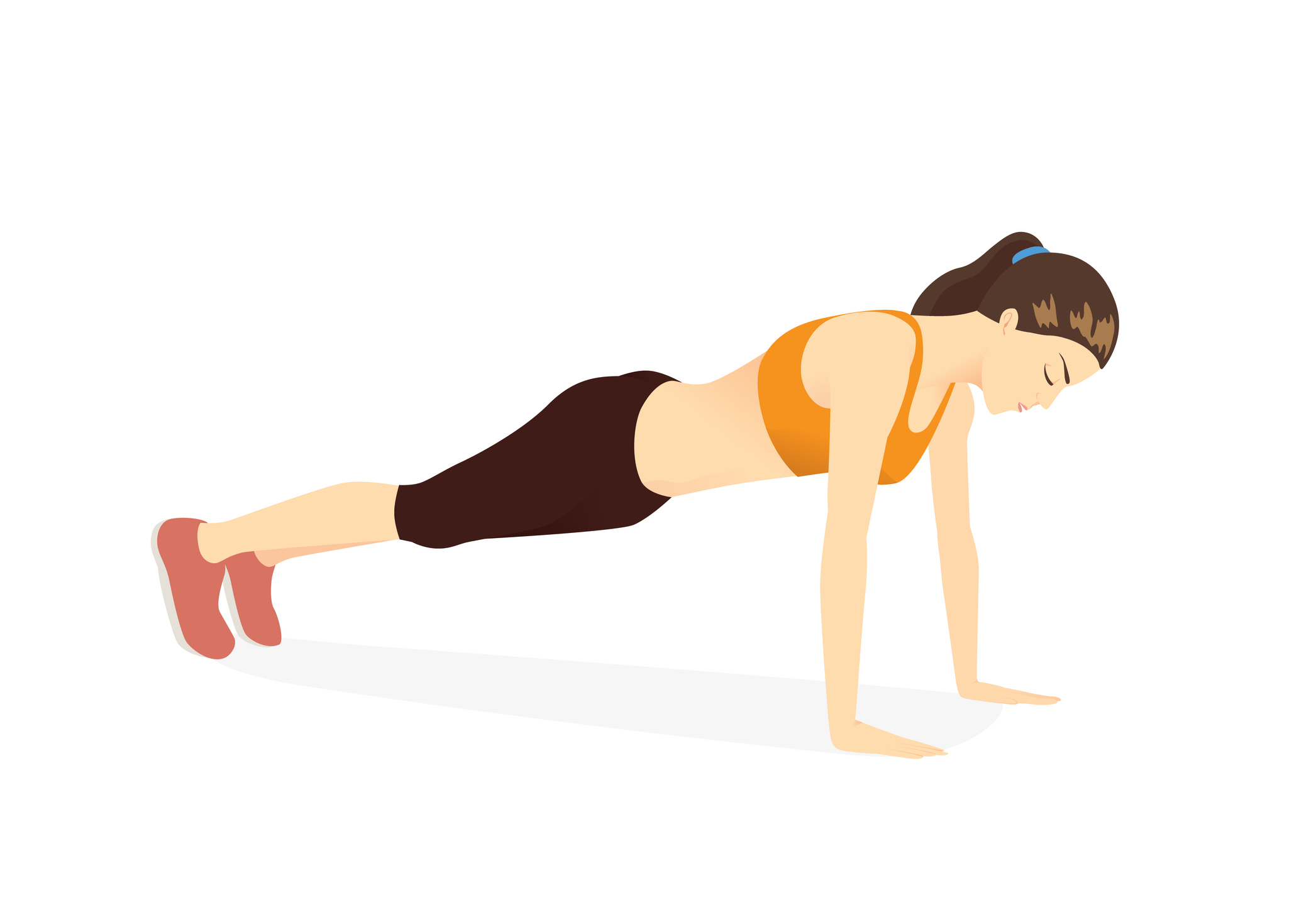
The basic position is an upright lying position, like when we go to do classic push-ups. We lower ourselves to our elbows or stay on our outstretched arms resting on our palms. We rest the tops of our feet on the floor. Our body is in line with our head and legs. We keep our head itself straight, so we look down at our hands. They are shoulder width apart, along with our feet. Our buttocks don't protrude too much, but we're not sagging in the pelvic area either.
We try to stay in this position for a certain time interval. Over time, we can increase the length and number of repetitions.
This exercise has different variations and is the basis for other exercises.
To increase the difficulty we can choose three or only two points of support instead of four.
We can also move the elbows or palms more forward.
In extreme cases, we lean only on the fingers and toes.
Side plank
One of the variants of the classic planck.

In this case, however, we turn sideways to the floor. We either lift ourselves up on the outstretched arm or lean on the elbow. The other arm is behind the head or bent to the side. The head is in line with the body, hips and legs. The feet are on top of each other.
A lighter option to better maintain stability is to put them behind you.
Turning to the other side will also exercise the other side.
Side plank with lower leg raise
This is one of the dynamic exercises. The movement of the lower limb helps to strengthen the muscles of the deep stabilization system.
The starting position is the side plank.

In this case, we remain leaning on the extended upper limb. The other arm is resting on the hip joint. We bend the lower limb at the knee and lean on it. The upper leg remains extended. It is this leg that we lift up to an approximately horizontal position with the floor. We perform several repetitions and switch sides.
In this article, you will learn how to properly practice the plank and what are its benefits.
Superman
The name comes from the position in which the exercise is performed.
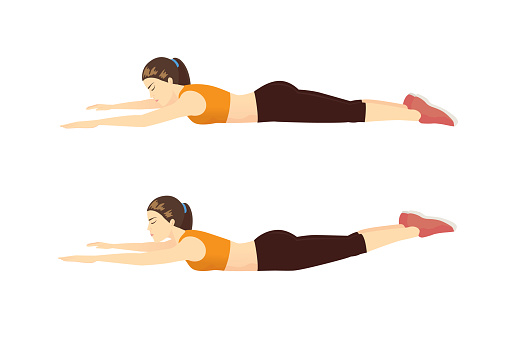
We lie on our stomach facing the floor. Legs are extended, feet are pointed down. Arms are raised. Hands palms facing down. Upper and lower limbs are next to each other. From this position, we repeatedly and simultaneously raise all limbs as high as possible off the floor. We bend at the waist to the point that only the lower abdomen and pelvis are touching it. The chest is also off the floor. We return to the original position.
If we keep the limbs a little further apart, the exercise will be less demanding.
Do several repetitions in a row.
Bridge
Lie on your back. Clasp your hands together or place them on your stomach. Bend your legs at the knees so that your shins are at almost right angles to the floor. Lift the toes of your feet off the floor so that only your heels touch the floor.
From this position, lift the hips and abdomen repeatedly, several times in succession. Stop when they are flush with the thighs and chest. Then, rest only on the heels and shoulder blades with the head. Return to the original position and repeat the exercise.
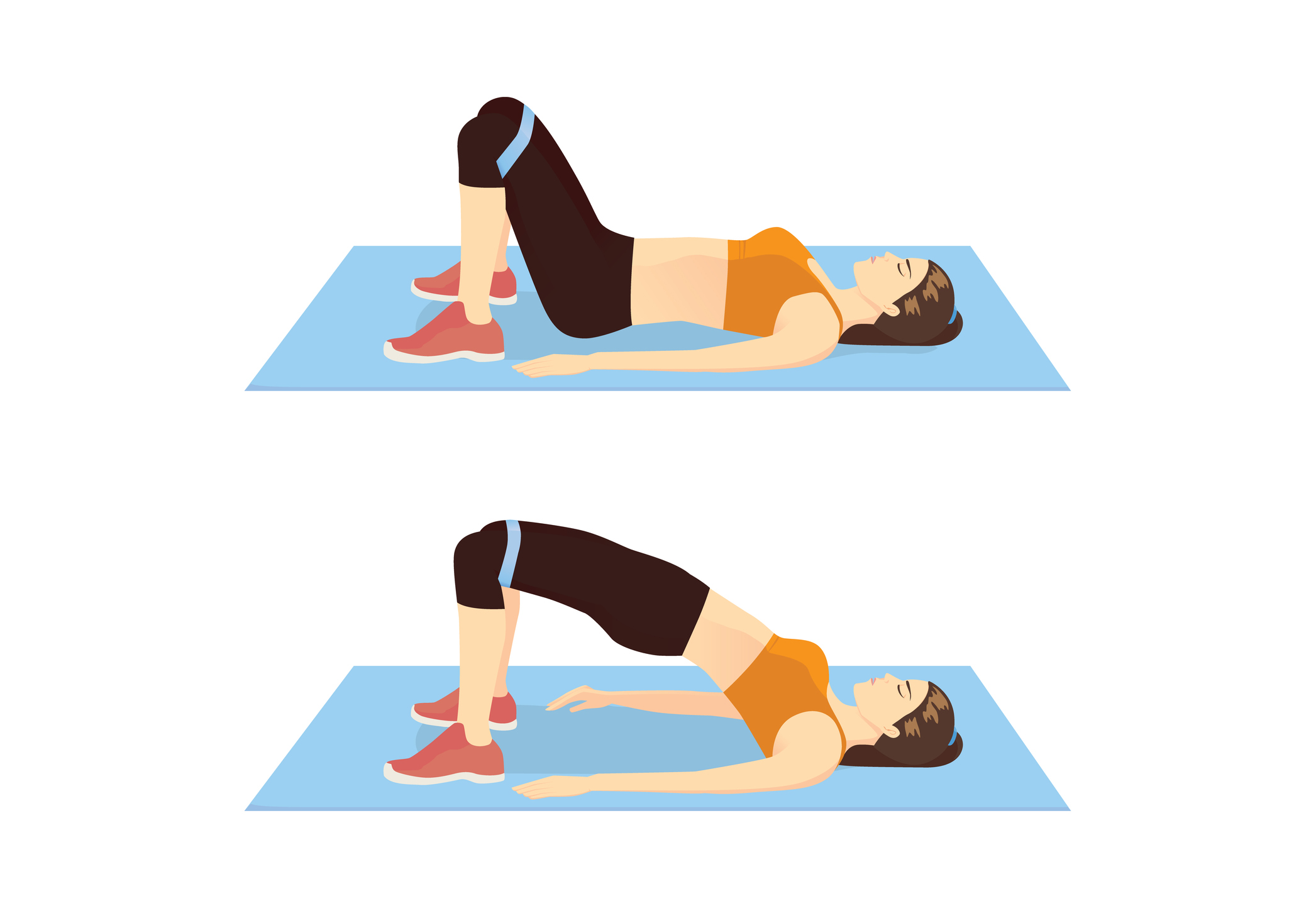
A more difficult variation is to perform this exercise with support on only one leg.
In this case, the other leg is rested on the knee of the opposite leg or the leg is kept straight.
The exercise is also more challenging if we perform it with our heels on a raised mat so that our shins are horizontal with the floor.
Knee to elbow
This can be practiced standing or in the supine position.
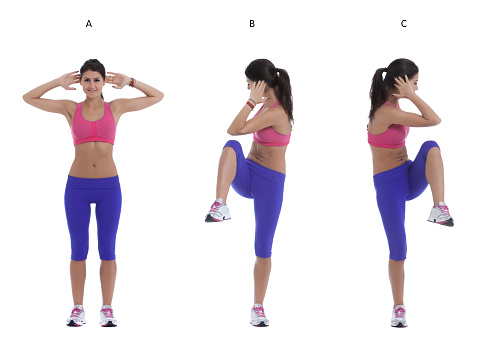
Stand upright with your feet shoulder width apart. Bring your hands together with your fingers behind your head. From this position, first lift one knee up. At the same time, with your torso turned and your hands still joined behind your head, point the elbow of the opposite upper limb towards the knee. Try to touch the elbow to the knee. Return to the original position and continue with the opposite limbs.
Right elbow, left knee, left elbow, right knee.
Do several repetitions in a row.
Lateral leg raises
Standing, perform the next exercise in this position.
However, it can also be practiced in the side plank position.
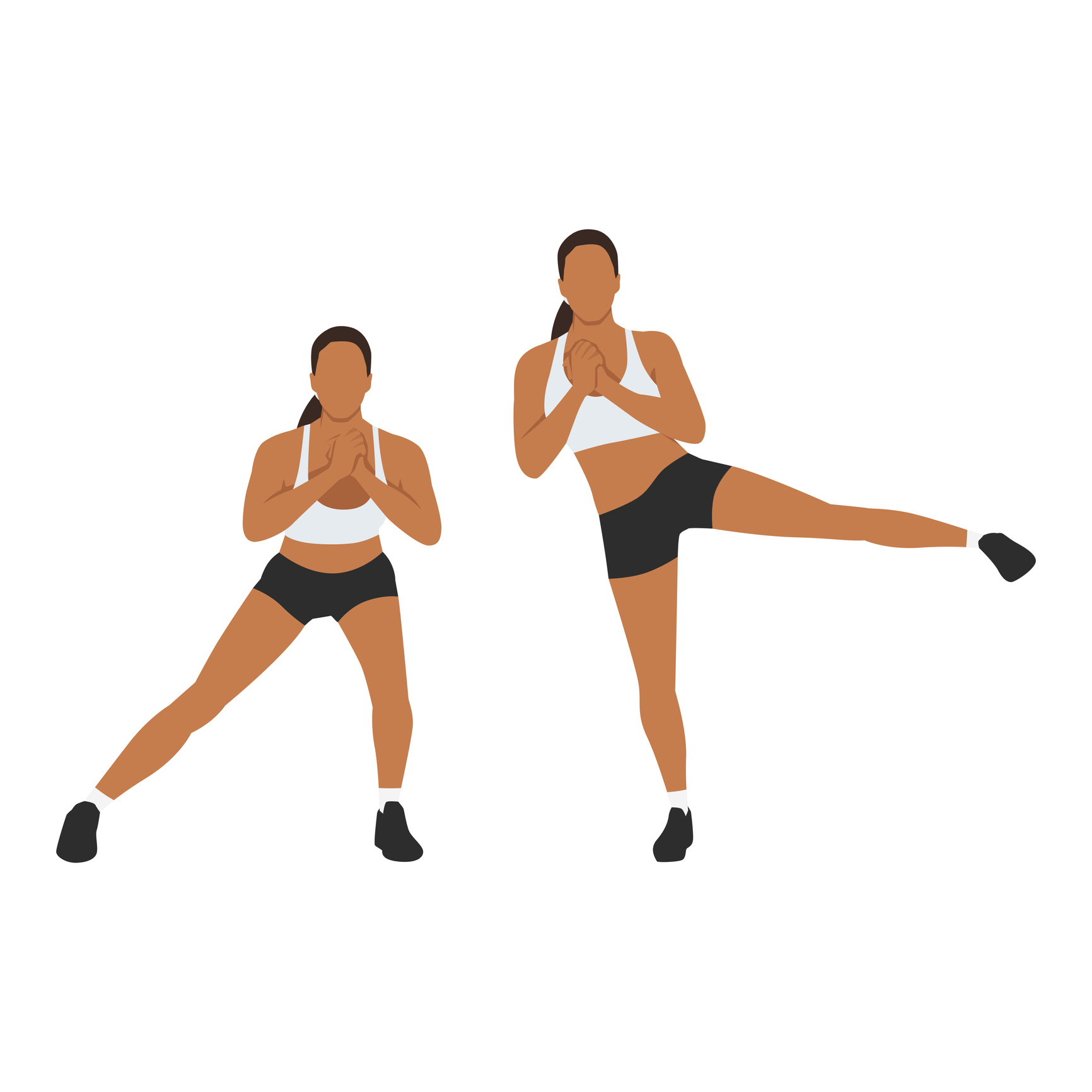
Stand upright with feet shoulder-width apart. The upper limbs should be straight. Repeatedly raise the laterally (i.e. sideways) extended lower limbs almost horizontal with the floor. The upper limbs point to the side of the raised leg. The closer one is extended, the more it is bent at the elbow over the middle of the body. As in marching.
Repeat several times per side and then switch sides.
But you can also alternate.
Alternating upper and lower limb lifts
This is a good exercise for stability and balance, among other things.
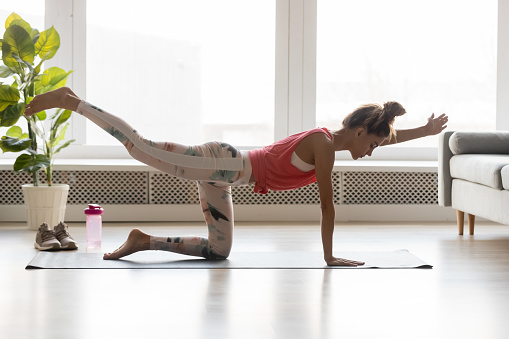
The basic position is on all fours. We rest on the palms of our outstretched hands and the knees and toes of our feet. The head and neck are horizontal with the torso, so we are looking straight down.
Raise and simultaneously extend the left leg until it is horizontal with the floor. At the same time, raise the right arm, also to a horizontal position. Return to the starting point and repeat with the opposite limbs.
Do several repetitions.
A harder version of this exercise is when performed from the plank position.
In this case, you are supporting yourself only on the toes and palms of the feet, or on the forearms.
Also read the article on high-intensity interval training.
Training the middle of the body is not demanding on space or equipment.
All you need is the desire and determination to achieve something.
Interesting resources
Related










